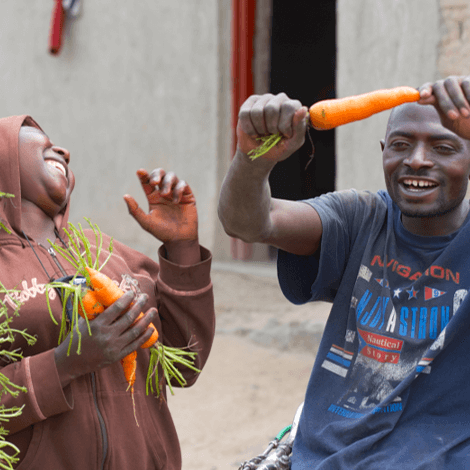
Our Projects are
Transforming African Trade
Quick Contacts
2nd Floor, Fidelity Insurance Centre Waiyaki Way, Westlands

“While conditions in the East Africa region have continued to be challenging due to political instability, ongoing macro-economic headwinds and drought conditions affecting certain countries, we’re seeing healthy competition between the two corridors, both fighting for position in terms of some of the ‘swing’ countries that could export or import cargo through either corridor, specifically Rwanda, Burundi, Uganda.”
While the Northern Corridor (serving Kenya, Uganda, South Sudan, and parts of Rwanda) import market experienced year-on-year growth of 6% in the first quarter, it declined slightly (by 1%) from the last quarter of 2016, says Felder. “In Kenya, liquidity is still very tight, caused by last year’s interest rate capping on the bank lending rate. In the next quarter we are expecting to see a slowdown in the import market as we approach the Kenyan elections on 8 August 2017, based on a natural cycle that we see in every election period, whereby the market drops by around 20% as importers seek to remain liquid, as opposed to having their cash tied up in inventory.”
Felder goes on to say that a number of factors have resulted in a fairly sluggish start to the year with regards to exports, culminating in a decline of 10% compared with the same period last year. “The poor performance exhibited by exports is largely a result of the drought that’s taken hold of Kenya and Uganda, severely impacting the agro-economy and exports of agro-based products, which are the main exports from the Northern Corridor.
“In Kenya, which represents around two-thirds of containerised demand in the corridor, tea – the biggest export in containers by volume – saw a market drop of about 20-25% during the first quarter. There was also a reduction in soda ash volume – an input material for the manufacturing of glass – given the changes in market demand, as well as fish exports from Lake Victoria due to over-fishing.”
Felder does, however, point out some encouraging developments in the budget in order to stimulate local beneficiation and value-adding manufacturing. “An important factor, impacting largely in a positive way, are duty changes from the most recent budget. For example, the reduction in corporate tax for vehicle assembly companies, duty exemption on goods exported to special economic zones (SEZ) and imports by enterprises licensed under the SEZ Act to be exempted from import declaration fees.”
In terms of other developments in the Northern Corridor, Felder says there is still some sluggishness in the Ugandan economy, accompanied by static private sector activity, while the South Sudan situation has yet to improve, characterised by political instability and a shortage of foreign currency, resulting in many infrastructure projects coming to an untimely standstill.
The containerised market in the Central Corridor (Tanzania, Burundi, Zambia, Malawi, DRC, and parts of Rwanda) represents a very different picture to that in the Northern Corridor, having contracted in both directions, says Felder. “Compared to the same period in 2016 last year, the Northern Corridor import market experienced growth of 6% in the first quarter 2017 versus the first quarter of 2016. This is, however, a decline of 1% from the last quarter of 2016.
“In the domestic Tanzanian market, there have been a number of duty increases on various products, such as cement, paper, sugar and furniture, which reduces the buying power and ultimately the levels of demand for those products. Part of this is to stimulate local industry, such as sugar production, but there is also a definite drive for increased tax collection in the country.”
He adds that while the export ban of mineral sands out of Tanzania has also had an impact on the mineral industries from DRC, Zambia and Rwanda, the Rwandan market appears to present a positive outlook.
Regarding the rest of the corridor, Felder says that political uncertainty and conflict continue to be a challenge. “In Zambia, although the currency has somewhat improved, it still remains relatively weak in comparison to where it was a couple years ago. The situation in Burundi continues to persist, whereby the country is in the middle of a major conflict with a lot of uncertainty, similar to the political uncertainty being experienced in DRC, with the indefinite postponement of elections that were set to take place in November of last year.”
Felder concludes by commenting on the progress of key infrastructure development projects that continue to expand in the region, improving trade efficiency and reducing the cost of trade, thus ultimately driving market growth:
Looking forward, the development along the Northern Corridor will very much depend on the Kenyan elections and the extent to which they are peaceful. A.P. Moller – Maersk expects, nevertheless, a short-term reduction in the import market, followed by a very quick recovery after the August elections. Furthermore, if the interest rate cap decision is reviewed, liquidity could increase, boosting trade and increasing buying power.
For the Central Corridor, the company does not expect to see much fundamental change for the rest of the year. On the long term, “we hope to see developments in mineral exports and we are also excited about the Rwandan market which is a buoyant economy and certainly seems to be taking a strong position in terms of becoming a key trading hub over time,” asserts Felder.
Disclaimer: The views and opinions expressed in this article are those of the authors and do not necessarily reflect the official policy or position of TradeMark Africa.